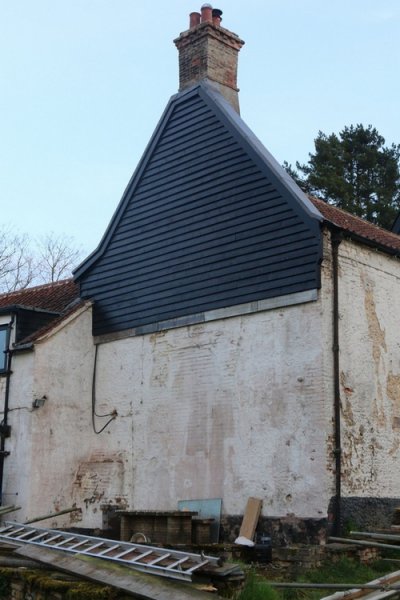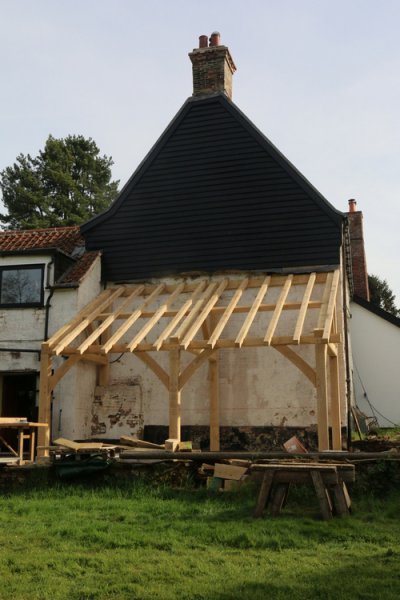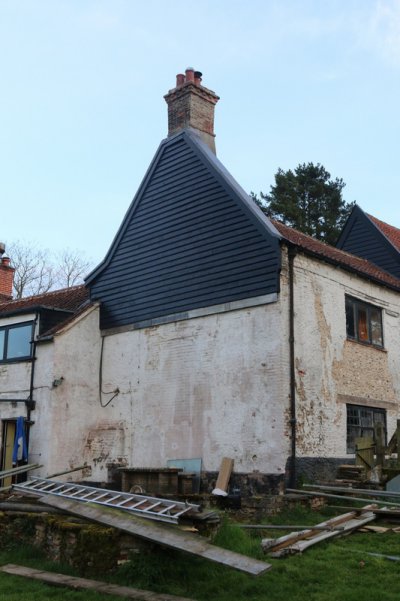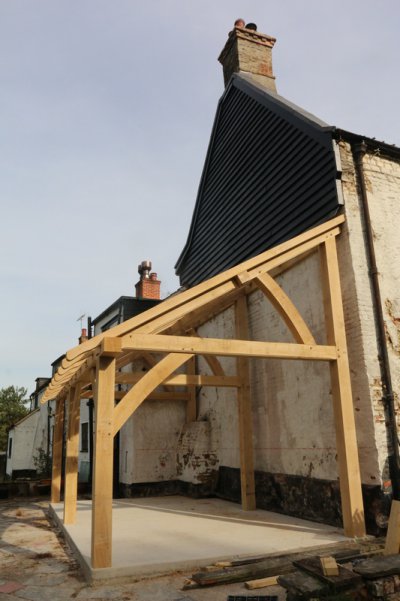Afternoon all, haven't spoken to you lovely people for a couple of years, have been enjoying the house after previous bout of renovations!
Anyway, time to enter the fray again so after some opinions
We have a Grade 2 listed 18C farmhouse built in solid brick walls that was badly "renovated" in the '80's prior to listing. This included cement rendering the weather facing wall and cement plastering the interior walls, laying a cement path all the way around the property butting up to the walls, you can guess the rest.......
Anyway a few years back we removed the cement plinth, repaired the wall behind and recovered in lime, which was relatively easy as the render had lost its bond with the disintergrating brickwork. We also put a french drain in to allow water to wick away from the wall. We tried removing some more render higher up the wall but the strength of the cement meant it was not coming off without damaging the soft bricks behind.
Fast forward a few years and we have the funds to have a go at fixing this. The render has cracks in it which are allowing more moisture into the wall so we want to try and stop this continuos ingress. TBH it's not that bad inside damp wise but that may be because the cement plaster is holding it all in the wall :roll:
We have a couple of options....
1. QS and local CO are happy for us to weatherboard over the render as at least this will stop further water ingress and allow the wall a chance to dry
2. A local conservation specialist builder is adamant that this will not improve the situation and that we are better removing the cement render, which they believe will have some effect on the bricks but not disasterous, and re render in lime which will cover the damage anyway. This will allow the wall to genuinely breath and give a chance to dry out properly.
Obviously there is a cost difference, but that aside, any thoughts on options 1 vs 2. TBH anything I do will improve the current situation, its just how much improvement vs cost....
Any thoughts/experiences more than welcome.
Cheers,
MM
Anyway, time to enter the fray again so after some opinions
We have a Grade 2 listed 18C farmhouse built in solid brick walls that was badly "renovated" in the '80's prior to listing. This included cement rendering the weather facing wall and cement plastering the interior walls, laying a cement path all the way around the property butting up to the walls, you can guess the rest.......
Anyway a few years back we removed the cement plinth, repaired the wall behind and recovered in lime, which was relatively easy as the render had lost its bond with the disintergrating brickwork. We also put a french drain in to allow water to wick away from the wall. We tried removing some more render higher up the wall but the strength of the cement meant it was not coming off without damaging the soft bricks behind.
Fast forward a few years and we have the funds to have a go at fixing this. The render has cracks in it which are allowing more moisture into the wall so we want to try and stop this continuos ingress. TBH it's not that bad inside damp wise but that may be because the cement plaster is holding it all in the wall :roll:
We have a couple of options....
1. QS and local CO are happy for us to weatherboard over the render as at least this will stop further water ingress and allow the wall a chance to dry
2. A local conservation specialist builder is adamant that this will not improve the situation and that we are better removing the cement render, which they believe will have some effect on the bricks but not disasterous, and re render in lime which will cover the damage anyway. This will allow the wall to genuinely breath and give a chance to dry out properly.
Obviously there is a cost difference, but that aside, any thoughts on options 1 vs 2. TBH anything I do will improve the current situation, its just how much improvement vs cost....
Any thoughts/experiences more than welcome.
Cheers,
MM




